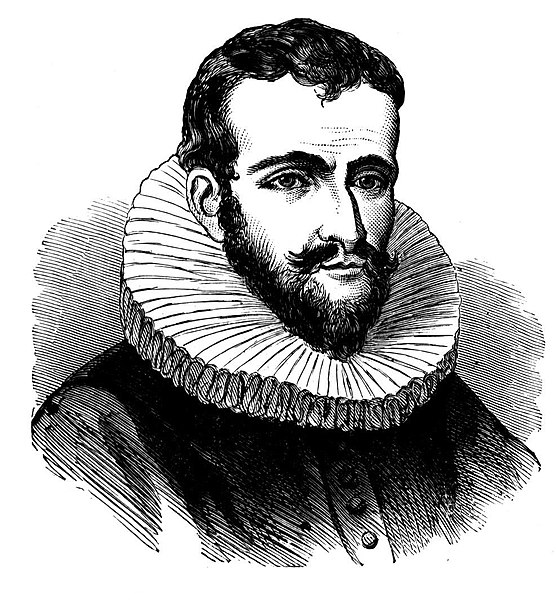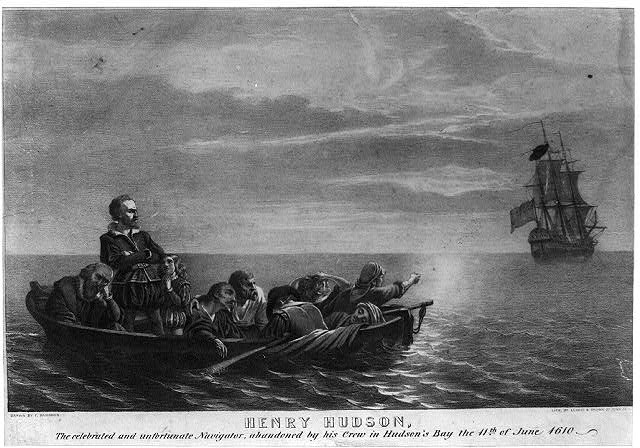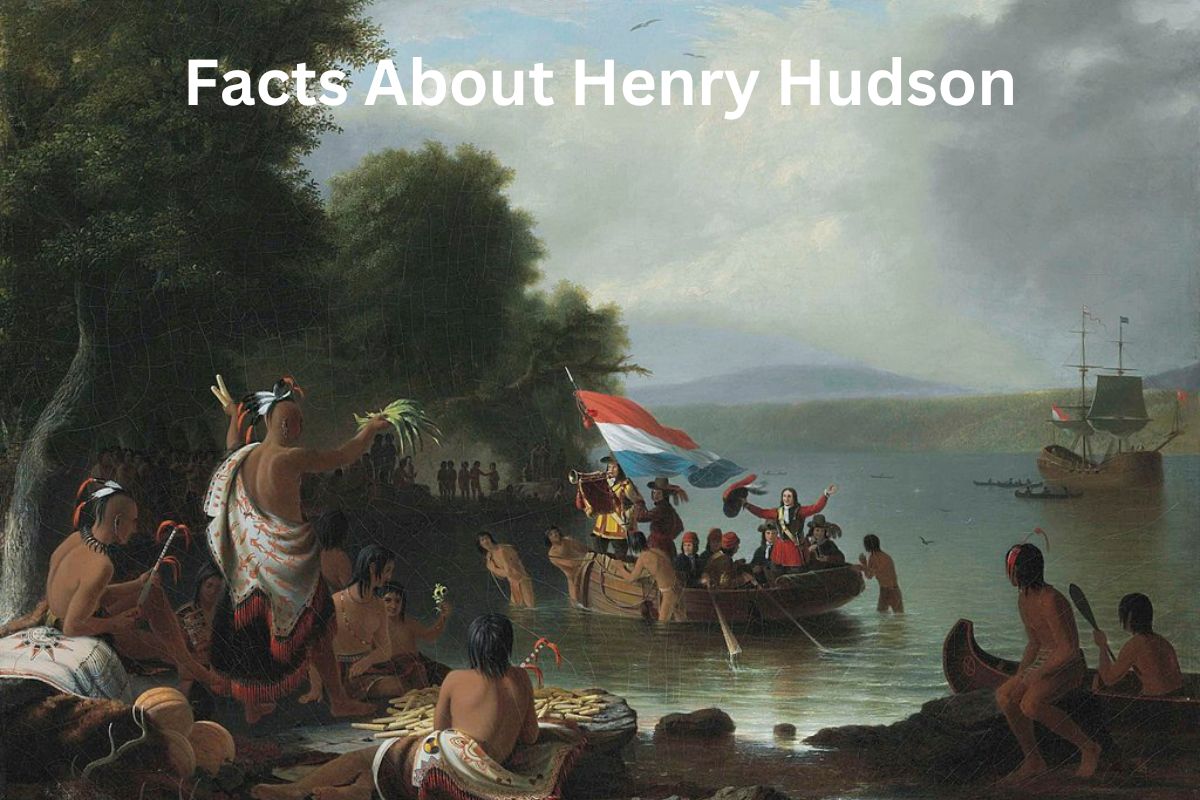Henry Hudson is well known for his early 17th-century exploration of North America, particularly his trips in search of the Northwest Passage to Asia.
He undertook four expeditions to Asia in pursuit of a northwest route, and his explorations of North America paved the way for European colonization of the continent.
He is primarily remembered for discovering the Hudson River, which runs through what is now New York, and for exploring Hudson Bay in what is now Canada.
Hudson’s travels aided in the establishment of European colonization of North America, and his name is commemorated at a number of locations around the region, including the Hudson River and Hudson Bay.
Henry Hudson Facts
1. He had three sons
Henry Hudson had three sons and was married. Katherine was his wife’s name, and the pair had three sons: John, Oliver, and Richard.

Hudson’s family stayed in England during his exploratory journeys, and his terrible death on his final voyage left them without a husband and father.
Also Read: Henry Hudson Accomplishments
Despite the dangers and hardships of his expeditions, Hudson’s curiosity and legacy as an explorer continue to inspire and captivate people all around the world.
2. His first expedition was a failure
The Muscovy Company supported Henry Hudson’s first expedition in pursuit of a new route to China in 1607. The voyage’s purpose was to find a passage to Asia by sailing around Russia’s northern coast, which was thought to be a shorter and easier path than traveling via Africa’s southern coast.
Also Read: Facts About Ponce de Leon
The expedition, however, was a failure since Hudson was unable to navigate the Arctic ice and terrible weather conditions. Yet, Hudson’s expedition was crucial in terms of exploring new territories and contributing to our developing understanding of the world’s geography.
3. His second expedition was a failure
The Muscovy Company also supported Hudson’s second journey, which took place in 1608, with the intention of finding a northeast passage to Asia by sailing via the Arctic Ocean.
Also Read: Henry Hudson Timeline
Nevertheless, Hudson’s second mission, like his first, failed to locate a viable trading route to Asia. The extreme Arctic circumstances, including as thick ice and hazardous storms, made it impossible for Hudson to navigate and explore the region.

Notwithstanding his failure to locate a direct path to Asia, Hudson’s journeys were significant for their exploration of new countries and contributions to our developing understanding of the world’s geography.
4. The Hudson River is named after him
In 1609, Henry Hudson set off on his third journey for the Dutch East India Company in quest of the Northwest Passage. He sailed up the Hudson River, which bears his name, and explored the territory that is today known as New York.
While Hudson’s search for the Northwest Passage was eventually fruitless, his exploration of the region had a profound impact on European colonization of North America.
Also Read: Jacques Cartier Facts
The Dutch constructed commercial posts in the area, and the region became known as New Netherland, which later became the English colony of New York.
The Hudson River remains an important waterway in the northeastern United States, as well as a popular recreation and tourism destination.
5. Hudson Bay in Canada is named after him
Henry Hudson traveled to Hudson Bay in Canada on his fourth and final journey in 1610, trying to locate a northwest way to Asia. Nevertheless, his ship became caught in ice, and Hudson and his crew were forced to spend the winter in the bay.
During this time, many crew members died of famine and disease. The crew attempted to return to England in the spring of 1611, but a mutiny broke out, and Hudson, along with his son and a few faithful crew members, were cast adrift in a small boat and were never seen again.
The specific circumstances surrounding Hudson’s death are unknown, however it is thought that he and his friends died at sea as a result of exposure or famine.
Despite the terrible end to his final journey, Hudson’s legacy as an explorer and his contributions to North American exploration are still revered and cherished today.
6. He was not the first to step foot in New York
Henry Hudson was not the first European to explore the territory that is today known as New York. Giovanni da Verrazzano, an Italian adventurer, sailed up the Hudson River in 1524, more than 80 years before Hudson’s journey in 1609.
The French crown supported Verrazzano’s journey, and his exploration of the region was crucial in terms of the discovery of new regions and its impact on the eventual colonization of North America by European powers.
7. Many landmarks in the commemorate Henry Hudson’s voyages
Many landmarks in the region commemorate Henry Hudson’s voyages of North America, including various geographical features that take his name.
The Hudson River, which flows through what is now the state of New York and was discovered by Hudson during his third voyage in 1609, is the most well-known of them.
Hudson Bay in Canada, which he explored during his fourth and final journey in 1610, and the Hudson Strait, which connects the Atlantic Ocean to Hudson Bay, are two other places named after him.
Hudson’s name has also been given to a number of schools, streets, and other places across North America and beyond, demonstrating the ongoing influence of his journeys and discoveries.
8. Hudson was temporarily held in the Netherlands
There is substantial debate over his contacts with the East India Company, and he was never placed under house arrest.
In fact, during his third journey for the Dutch East India Company in 1609, Hudson was temporarily held in the Netherlands on suspicion of breaching his contract.
He was quickly released, however, and returned to London, where he proceeded to seek money for further exploration.
9. Hudson is credited with discovering the Hudson Strait
During his third voyage in 1609, Henry Hudson is credited with discovering the Hudson Strait. The Hudson Strait is a narrow canal that connects the Atlantic Ocean to Hudson Bay and separates the Canadian provinces of Quebec and Newfoundland and Labrador.
During his investigation of the region, Hudson sailed across the strait and recorded its passage, contributing to a greater understanding of North American geography.
The Hudson Strait’s discovery had a huge impact on European trade and exploration of the region since it provided a more direct route for ships sailing between Europe and North America’s rich fur-bearing territories.
Hudson’s name is still associated with the strait, which is still an important shipping and transit route today.
10. There is no concrete evidence as to how he died
Henry Hudson’s precise fate is unknown, however it is thought that a mutinous crew sent him and several loyal crew members adrift in a tiny boat during his final voyage in 1610-1611, and they were never seen again.
It is possible that they died at sea as a result of exposure, malnutrition, or other Arctic hazards.
Yet, historical evidence shows that some of the stranded crew members may have been rescued by Indigenous peoples or found their way to safety on their own.
